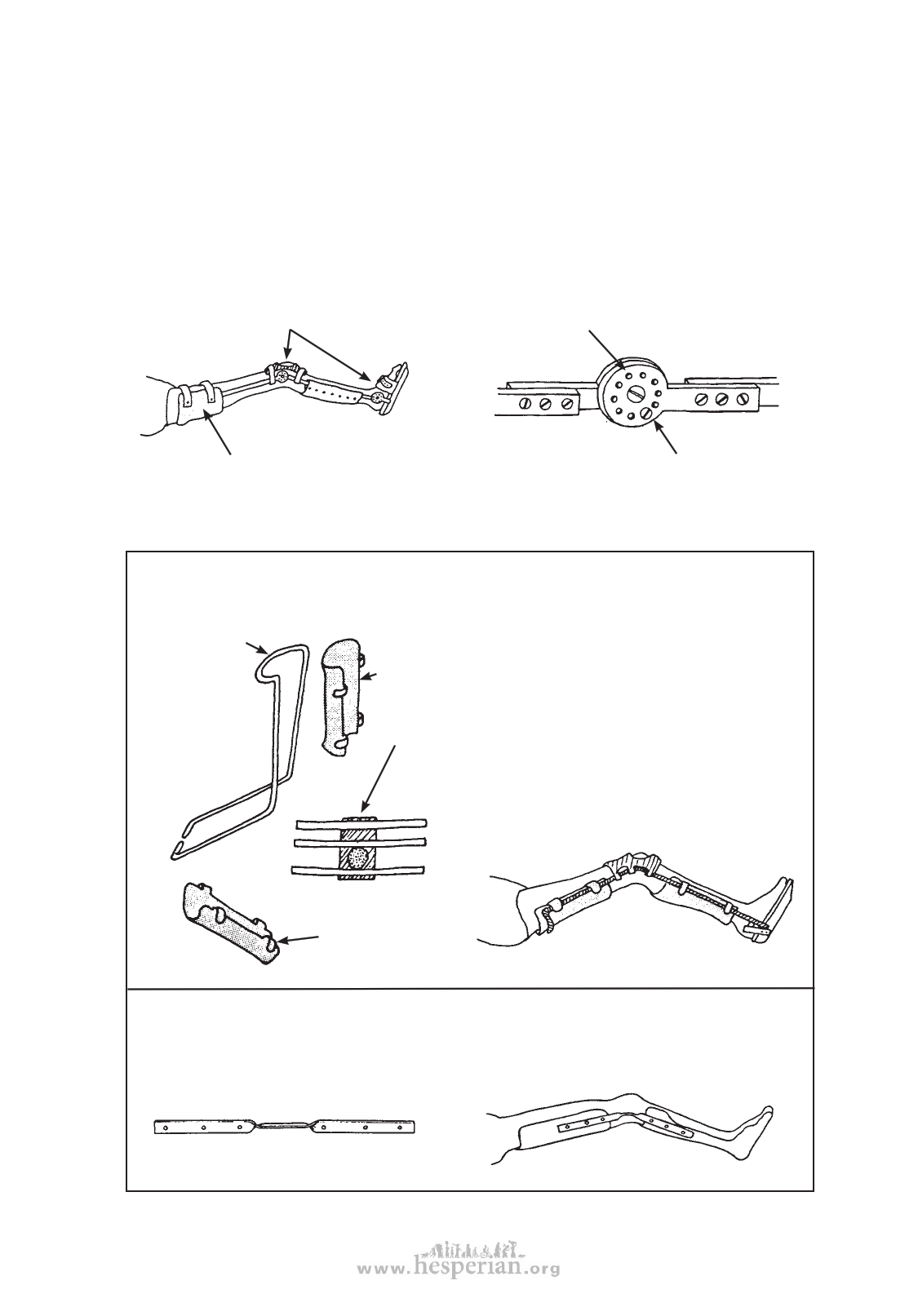
CORRECTING JOINT CONTRACTURES
HOW TO CORRECT CONTRACTURES
USING ADJUSTABLE BRACES
The advantage of these braces is that children do not have to visit the rehabilitation
center so often to have them adjusted. The family can adjust them at home.
Orthopedic suppliers in some countries sell special knee and ankle joints that can
be locked in different positions. But these are very expensive. However, a skilled village
craftsperson can put together something similar:
Knee and ankle joints can be
adjusted every few days to
gradually straighten the joints.
Space the holes on the 2 pieces
differently so that lining them up
allows a range of small adjustments.
563
leather or
plastic cuffs
adjustment
screw or pin
A much simpler low-cost model can be made of round or flat metal bar.
Round metal rod (re-bar)
rod about 80 mm
(1/4 inch) thick
(depends on size
of child)
Bend rod just
a little less
than knee will
straighten.
plastic heat-
molded to fit
leg, or simply
bent with heat
(or use leather)
knee pad
with extra
width
above knee
These metal bar braces are used in a
way similar to a standard above-knee
brace (see p. 543). Every 2 or 3 days,
bend the bar a little straighter at the
knee. The brace can be made cheaply,
and can be removed for walking and
exercise, and to check for sores. As
the leg becomes straighter, any of
these braces can be used as a regular
walking brace with a clog.
tabs bent back
with heat to
grip bar
Flat metal bar
Use flat steel bar that is strong enough to
hold leg firmly.
Twist the middle part of the bar in a vise so
that it can be bent tor easy adjustments.
disabled village children